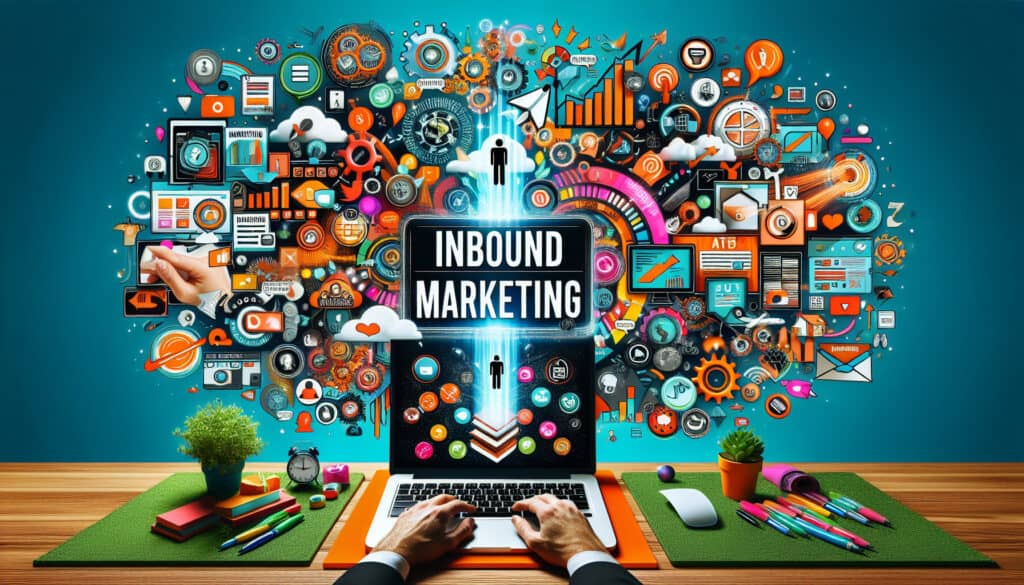To attract customers with content and experiences they value.
- Methodologies: Customers & Marketing, Economics, Product Design
Inbound Marketing

Inbound Marketing
- Brand Positioning, Customer Experience, Customer Journey Mapping, Digital Marketing, Marketing Strategy, Value Proposition
Objective:
How it’s used:
- A marketing methodology that focuses on creating valuable content and experiences that attract customers to a brand, rather than pushing a message out to them. It involves techniques like content marketing, social media marketing, and search engine optimization.
Pros
- Builds trust and credibility with customers; Can be more cost-effective than traditional marketing.
Cons
- Can take time to see results; Requires a consistent effort to create high-quality content.
Categories:
- Customers & Marketing
Best for:
- Attracting and converting customers for businesses in the digital age.
Inbound Marketing finds significant application across various industries such as technology, consumer goods, healthcare, and financial services, enabling businesses to effectively engage their target audiences through relevant and informative content. Typical projects leveraging this methodology begin during the product development phase, where teams integrate user personas and content strategies into their broader marketing plans, thus aligning product features with consumer needs and preferences. Participants often include marketing specialists, content creators, data analysts, and product designers, all working collaboratively to craft compelling narratives that resonate with potential customers. For instance, in the tech industry, companies may produce blog posts, whitepapers, or case studies showcasing innovative applications of their products, while simultaneously utilizing social media platforms to build community and share expert insights. SEO techniques further enhance the discoverability of this content, ensuring that users find valuable information when searching online. As customers engage with this content, they cultivate a relationship with the brand, allowing for a smoother transition from awareness to consideration and ultimately, conversion. This approach not only builds brand loyalty but also facilitates user-generated content and brand advocacy, resulting in a sustainable marketing strategy that adapts to changing consumer behaviors. Studies indicate that businesses employing inbound marketing often report higher ROI compared to those relying solely on traditional advertising methods, reinforcing the shift towards this more user-centric approach in marketing practices.
Key steps of this methodology
- Define buyer personas to target specific segments based on needs and preferences.
- Create high-quality, relevant content that addresses the interests and pain points of your audience.
- Implement search engine optimization strategies to enhance content visibility on search engines.
- Utilize social media platforms to distribute content and engage with potential customers.
- Develop lead magnets such as e-books or webinars to capture visitor information.
- Design workflows to nurture leads through personalized email marketing campaigns.
- Analyze and optimize content performance using key metrics to improve future strategies.
Pro Tips
- Utilize advanced data analytics to personalize content strategies based on user behavior and preferences, ensuring relevance and engagement.
- Implement multi-channel approaches to distribute content, analyzing performance metrics across platforms for continuous improvement and optimization.
- Leverage user-generated content and customer testimonials to enhance authenticity and trust, integrating them strategically into marketing campaigns.
To read and compare several methodologies, we recommend the
> Extensive Methodologies Repository <
together with the 400+ other methodologies.
Your comments on this methodology or additional info are welcome on the comment section below ↓ , so as any engineering-related ideas or links.
Historical Context
1960
1980
1983
1990
1995
2000
2010
1950
1980
1980
1986
1994
1995
2000
(if date is unknown or not relevant, e.g. "fluid mechanics", a rounded estimation of its notable emergence is provided)














Related Posts
Musculoskeletal Discomfort Questionnaires
Multivariate Testing (MVT)
Multiple Regression Analysis
Motion Capture Systems
MoSCoW Method
Mood’s Median Test